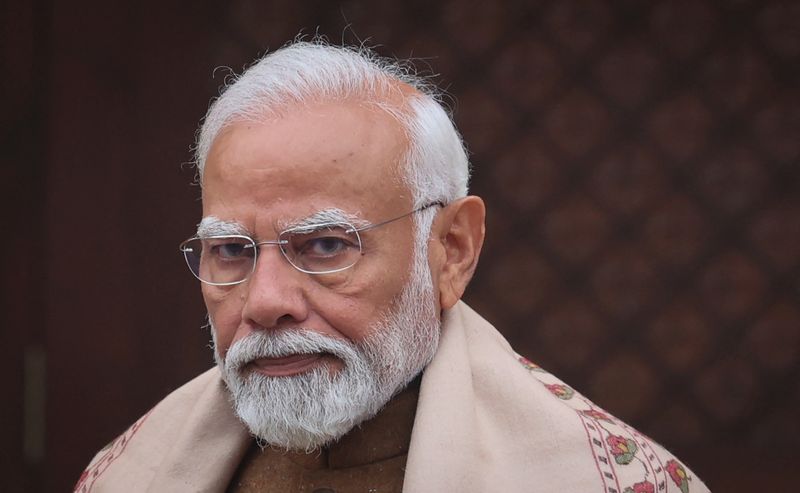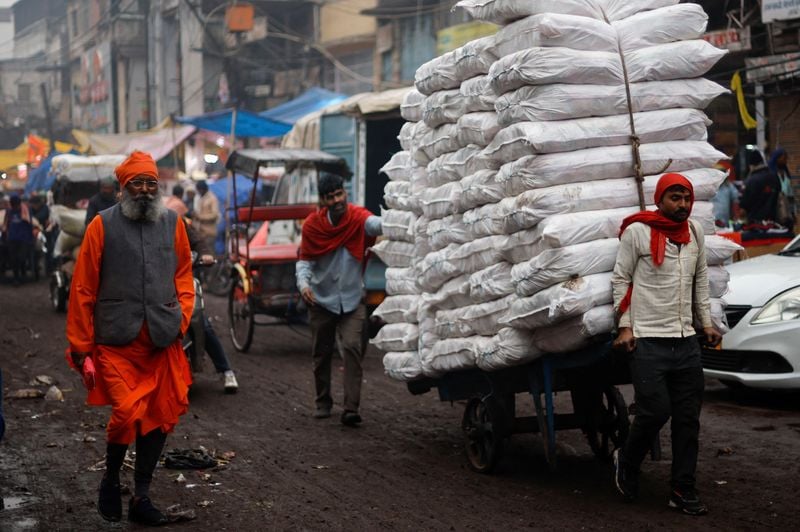NEW DELHI (Reuters) – India’s Prime Minister Narendra Modi has a mixed record of managing the economy – hiking state spending to build roads, ports and power plants, but not doing enough to create jobs for millions of youth, analysts said.
In the interim budget ahead of general elections by May, Modi’s government is expected to focus on infrastructure spending to improve the economy’s long-term prospects, officials said.
The economy is projected to grow 7.3% in the fiscal year ending March, the highest rate among major global economies.
However, growth in farm output, which contributes about 15% of GDP and employs more than 40% of the workforce, was seen slowing to 1.8% in the current fiscal year, from 4% a year ago.
ECONOMIC OUTPUT
The Indian economy is projected to grow around 7% in the next financial year that starts from April 1, and there is “considerable scope” for India to grow above 7% by 2030, according to government estimates.
INFLATION
After low retail inflation during the first term of Modi till mid-2019, the economy has seen rises in retail prices, driven by post-pandemic global supply disruptions, higher import tariffs and an increase in global commodity prices.
Retail inflation in 2022/23 accelerated to 6.7% from 5.5% in 2021/22, and 6.2% the year ago. The cost of living for the poor has sharply risen in last five years due to a surge in food prices.
FISCAL DEFICIT
Modi’s administration has justified higher government borrowing to fund a widening fiscal deficit – the gap between income and spending – to combat the impact of the COVID-19 pandemic and to boost infrastructure spending.
The fiscal deficit could remain at 5.9% of GDP in 2023/24 after ballooning to 9.3% in 2020-21, during the pandemic. The federal fiscal deficit in 2013/14 was 4.6% of GDP when Modi took charge.
UNEMPLOYMENT
Modi faces criticism for not creating enough jobs despite offering billions of dollars in subsidies to boost manufacturing.
The unemployment rate rose to 5.4% in 2022/23, from 4.9% in 2013/14, according to government estimates. Nearly 16% of urban youth in the age group of 15-29 years remained unemployed in 2022/23, due to poor skills and lack of quality jobs, government data showed. Estimates by private agencies are much higher.
RISING DEBT
India’s public debt remains elevated and is expected to rise to 82.3% of GDP by 2024/25, according to IMF estimates.
Government payouts for servicing its debt are estimated to increase to over 40% of total revenue receipts in the current fiscal year.
General government debt, which includes federal and state government debt, could be 100% of GDP under adverse circumstances by fiscal 2028, the IMF said.
PRIVATISATION
The government met its privatisation target only twice in the last decade, with the notable sale of Air India while it deferred stake sales in state-run banks and companies.
In 2023/24, the government may not be able raise even 300 billion rupees through stake sales, less than 40% of budget target.
HOUSING BOOM
Modi’s government has subsidised construction of concrete houses for around 40 million impoverished households in a decade, and raised spending to build rural roads.
The federal and state governments have spent $29 billion over the last five years on housing subsidies. Opposition parties, however, say the programme missed its original deadline of 2022.
DOUBLING FARMERS’ INCOME
Modi’s critics said his government has not fulfilled the poll promise of doubling farmers’ income by 2022.
However, the government says steps like cash payouts to farmers, and raising crop procurement prices, among others, has helped in augmenting farmers’ income.
(Reporting by Nikunj Ohri and Manoj Kumar in New Delhi; Editing by Kim Coghill)

